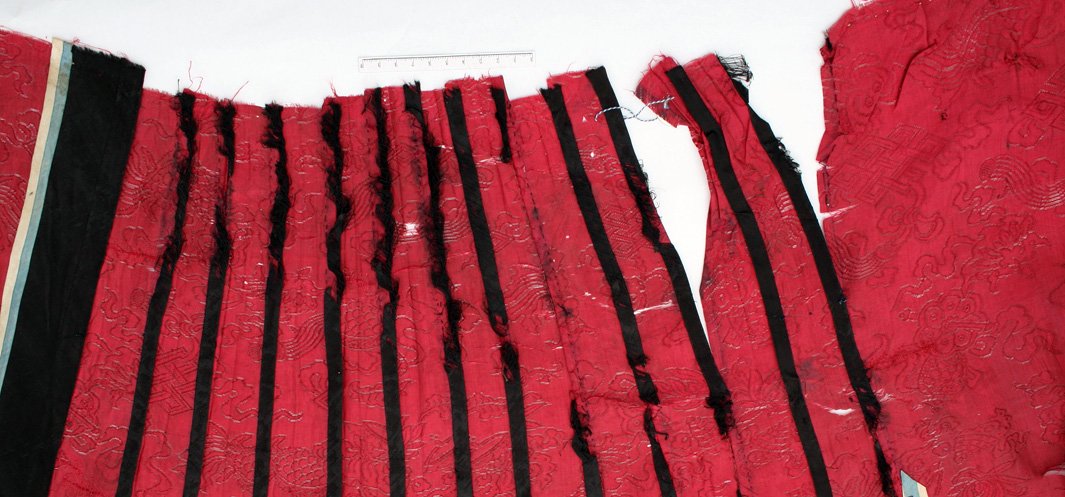Textile Conservation Studio
The earliest mention of textile conservation at the National Museum in Krakow is dated 1910. 'We have managed to bring the department of fabrics and embroideries to complete order. A number of damaged specimens have been mended...', we read in the report.
The present Textile Conservation Studio was formally established in 1938. It supervises the conservation of all the textile objects held by the various departments of our museum: Textiles, Far Eastern Art, Orthodox Church Art, Decorative Arts and Material Culture, Militaria, the Józef Mehoffer House, the Jan Matejko House, and the Princes Czartoryski Museum. These constitute the largest and one of the most valuable textile collections in Poland, comprising objects made in a variety of techniques, from sundry materials: archaeological fabrics, tapestries, kilims and other cloth hangings, European and Oriental silks, liturgical garments and paraments, flags and banners, as well as various articles of clothing and fashion accessories. With a history of nearly a century, the studio has accumulated considerable knowledge of, and ability to assess objectively, various conservation methods, which have changed over this period. This enables us to select the most appropriate methods, in compliance with professional ethics and principles observed worldwide. All its preservation and conservation work is conducted as part of programmes developed individually for each object. We work together with specialists in various fields: chemistry, physics, and microbiology. It is often the results of laboratory tests that prove decisive for the selection of the most appropriate manner of conserving and displaying historic textiles. Due to the considerable diversity of these objects in terms of materials, techniques of execution and originally intended use, our conservation specialists are expected to be trained in a wide range of fields and to continually expand their knowledge. A significant way of fulfilling this postulate is exchange of experiences with other institutions at home and abroad.
With a history of nearly a century, the studio has accumulated considerable knowledge of, and ability to assess objectively, various conservation methods, which have changed over this period. This enables us to select the most appropriate methods, in compliance with professional ethics and principles observed worldwide. All its preservation and conservation work is conducted as part of programmes developed individually for each object. We work together with specialists in various fields: chemistry, physics, and microbiology. It is often the results of laboratory tests that prove decisive for the selection of the most appropriate manner of conserving and displaying historic textiles. Due to the considerable diversity of these objects in terms of materials, techniques of execution and originally intended use, our conservation specialists are expected to be trained in a wide range of fields and to continually expand their knowledge. A significant way of fulfilling this postulate is exchange of experiences with other institutions at home and abroad.
The studio’s activities are not confined to textile conservation. Another major priority is the prevention of damage to museum collections. In line with international standards for the control of the museum environment (lighting, climate and atmospheric conditions), all displays of textiles in exhibition spaces are monitored on an ongoing basis. There are also regular reviews of textiles kept in storage.
Our conservation specialists are involved in the construction of exhibitions, issue opinion statements on the state of preservation of exhibits, and contribute to the periodic risk assessment reports prepared for the collections of the National Museum in Krakow. In-depth analysis of all the aspects of protecting and preserving textile objects (storage, display and transport) leads to organizational changes that make it possible to counteract all potential threats more effectively.
